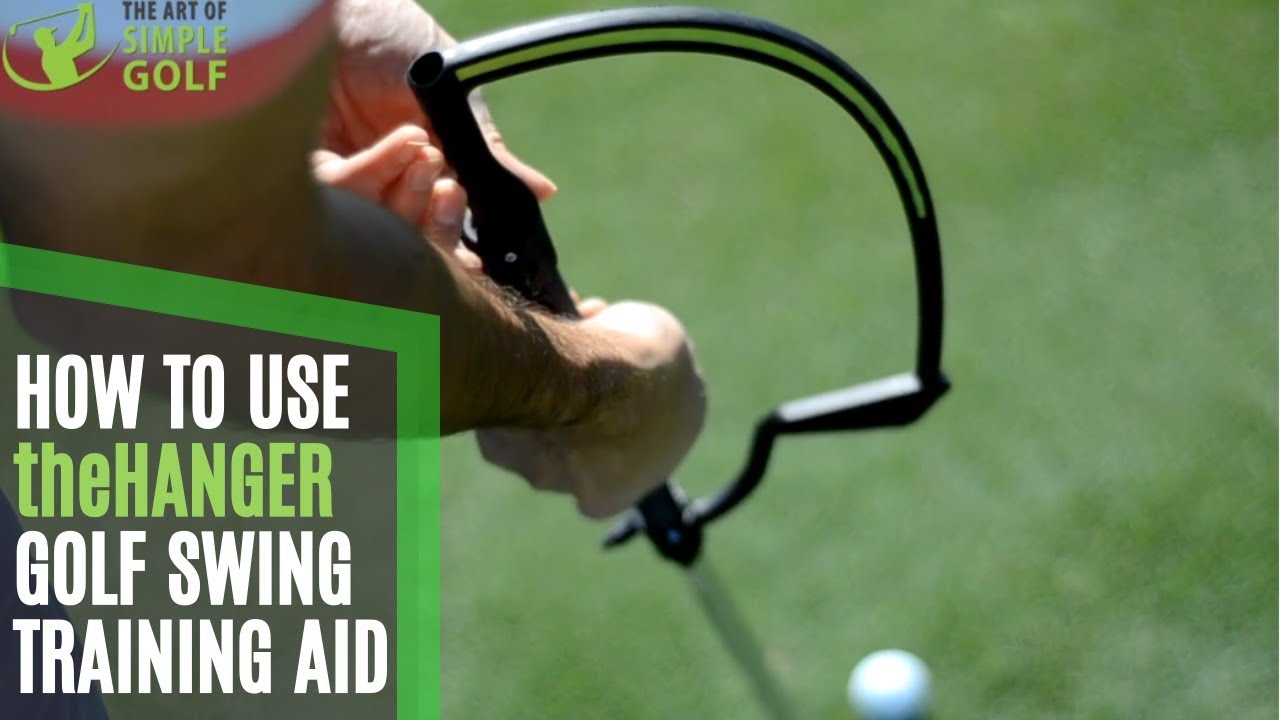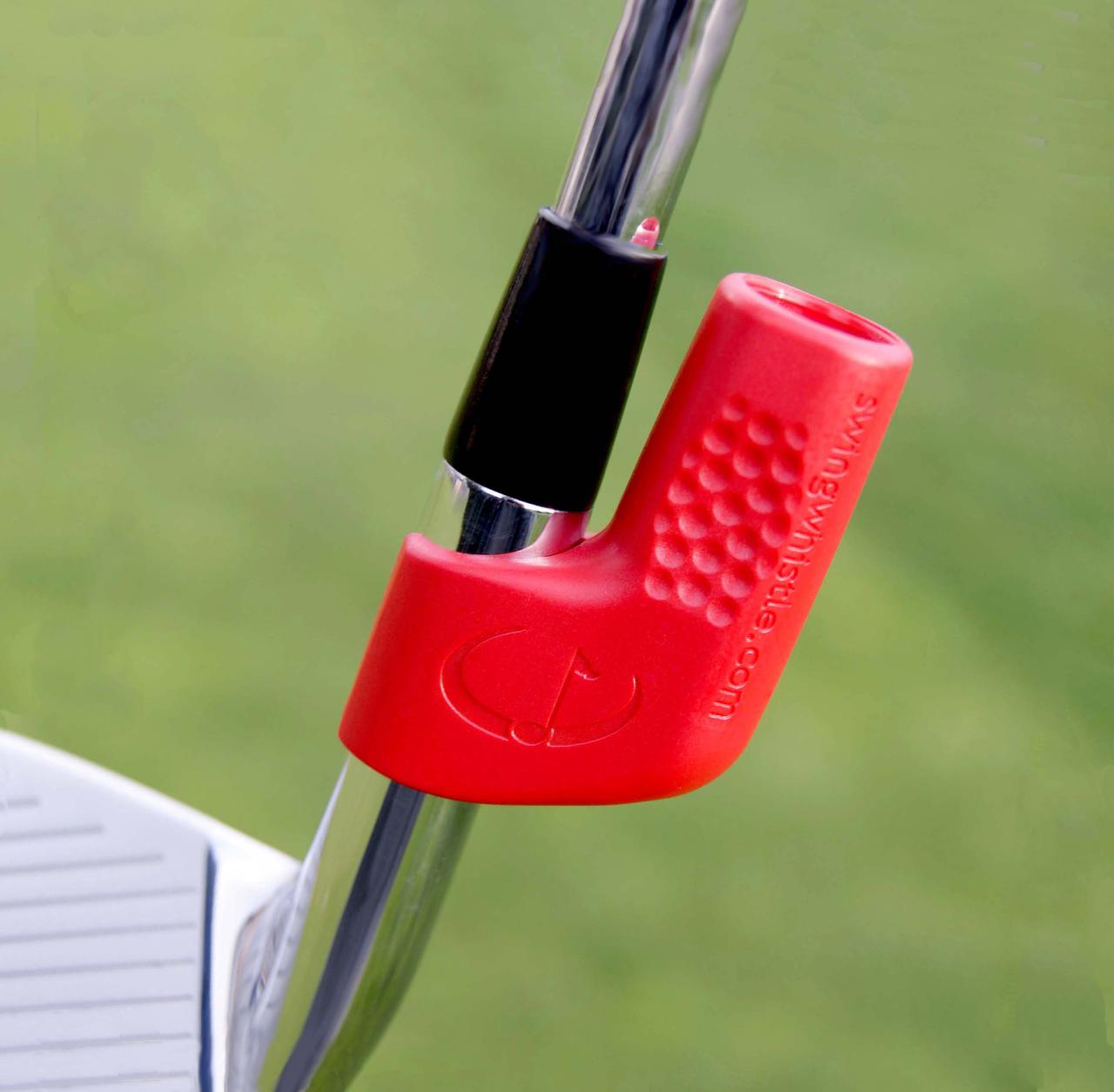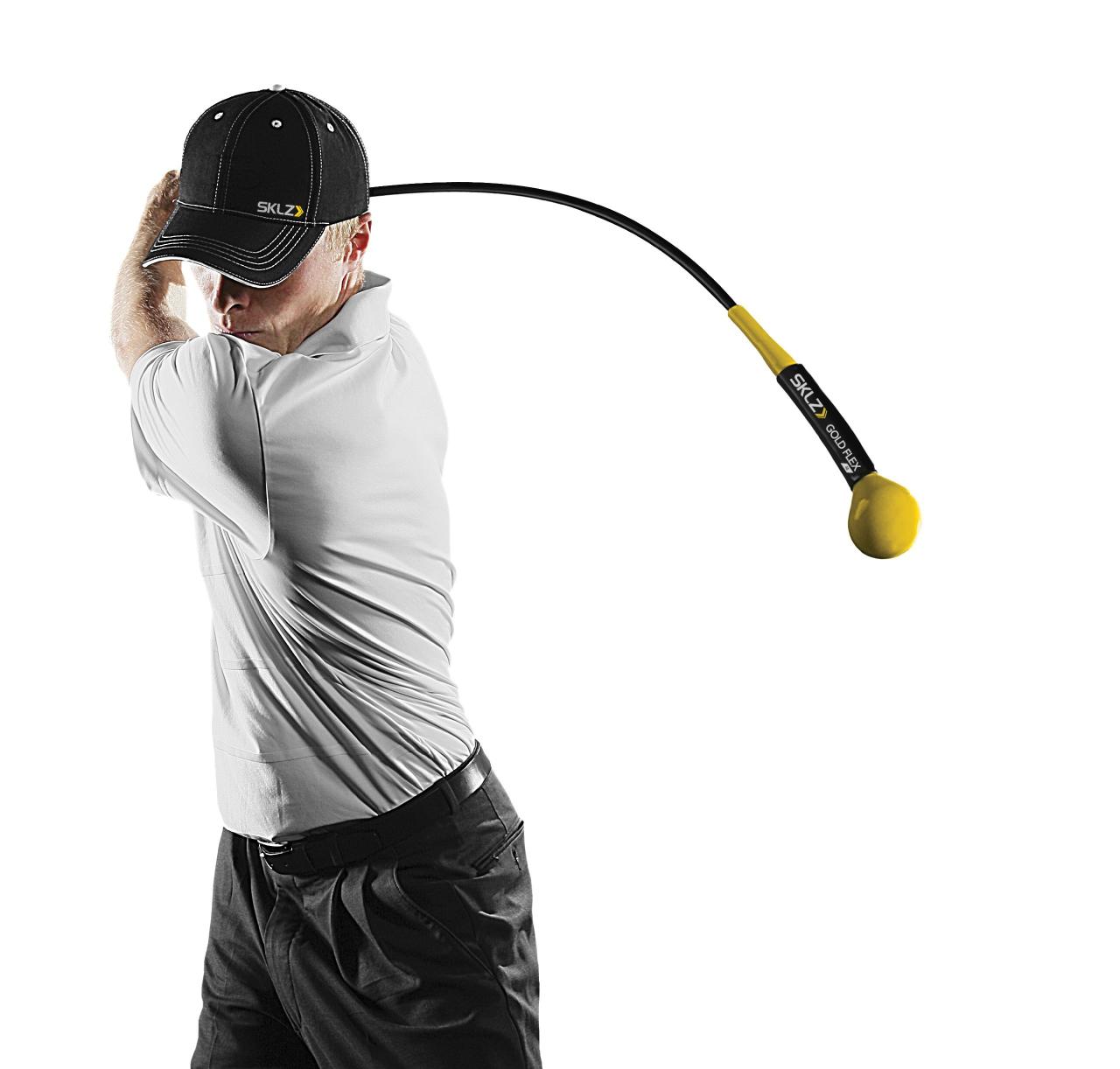Golf swing tools have become an indispensable part of the modern golfer’s arsenal, offering a wide range of options to refine technique and improve performance. From training aids that help visualize proper swing paths to alignment tools that ensure accuracy, these tools cater to various aspects of the game, empowering players to unlock their full potential.
These tools work by providing visual and physical feedback, helping golfers identify and correct swing flaws. Whether it’s a misaligned stance, an inconsistent backswing, or a poor follow-through, golf swing tools can offer valuable insights and guidance to refine each element of the swing.
Introduction to Golf Swing Tools

Golf swing tools are devices designed to aid golfers in improving their swing mechanics and overall performance. They offer a variety of functionalities, from helping golfers visualize proper swing plane and posture to providing real-time feedback on swing parameters. These tools can be valuable assets for golfers of all skill levels, from beginners seeking to establish a solid foundation to seasoned players looking to refine their technique and unlock greater potential.
Types of Golf Swing Tools
Golf swing tools encompass a diverse range of products catering to different aspects of the golf swing. They can be broadly categorized into three primary types: training aids, alignment tools, and swing analyzers.
- Training aids are designed to help golfers develop muscle memory and correct swing flaws. They often focus on specific aspects of the swing, such as grip, posture, or swing plane. Examples include:
- Swing trainers: These devices help golfers maintain proper grip and swing path.
Some popular options include the SwingRite, the Orange Whip, and the SuperSpeed Golf Trainer.
- Putting aids: These tools help golfers improve their putting stroke, often focusing on alignment, distance control, and consistency. Examples include the Perfect Putt, the PuttOUT, and the Tru Putt.
- Swing trainers: These devices help golfers maintain proper grip and swing path.
- Alignment tools help golfers position themselves correctly for each shot. They ensure proper alignment of the body, clubface, and target line. Common examples include:
- Alignment sticks: These are simple but effective tools that help golfers visualize their target line and ensure proper clubface alignment.
- Alignment mirrors: These mirrors allow golfers to see their posture and swing path from different angles, aiding in identifying and correcting alignment issues.
- Swing analyzers provide real-time feedback on swing parameters, such as clubhead speed, swing path, and ball launch angle. This data allows golfers to understand their swing mechanics and identify areas for improvement. Some popular swing analyzers include:
- Launch monitors: These devices track the ball’s flight path and provide data on distance, launch angle, and spin rate.
Popular examples include the TrackMan, the GCQuad, and the Flightscope.
- Swing analyzers: These devices use sensors to track clubhead movement, swing path, and other parameters. They often provide feedback through apps or software, allowing golfers to analyze their swing and identify areas for improvement. Examples include the Swing Catalyst, the Zepp Golf 2, and the Arccos Caddie.
- Launch monitors: These devices track the ball’s flight path and provide data on distance, launch angle, and spin rate.
Benefits of Using Golf Swing Tools
Golf swing tools can provide numerous benefits for golfers looking to improve their game. Some of the key advantages include:
- Improved swing mechanics: Golf swing tools can help golfers develop proper swing technique and identify and correct swing flaws. By providing visual and tactile feedback, they help golfers develop muscle memory and establish a more consistent swing.
- Enhanced consistency: Using golf swing tools can lead to greater consistency in all aspects of the game, from tee shots to putting. By promoting proper alignment and swing path, they help golfers hit the ball more consistently and with greater accuracy.
- Increased distance and accuracy: By optimizing swing mechanics, golf swing tools can help golfers hit the ball farther and straighter. They allow golfers to identify and correct swing flaws that may be hindering their distance and accuracy.
- Reduced injuries: Golf swing tools can help golfers avoid injuries by promoting proper swing mechanics and reducing stress on the body. By correcting swing flaws and promoting efficient movement, they help golfers maintain proper form and reduce the risk of overuse injuries.
- Increased enjoyment: Golf swing tools can help golfers enjoy the game more by improving their performance and building confidence. By providing feedback and helping golfers achieve their goals, they make the game more rewarding and enjoyable.
Popular Golf Swing Tools

Golf swing tools are designed to improve various aspects of your swing, from your grip and posture to your swing plane and clubhead speed. These tools can be valuable aids for golfers of all levels, helping you identify and correct swing flaws and ultimately improve your game.
Types of Golf Swing Tools
The variety of golf swing tools available can be overwhelming. Here are some popular tools, categorized by their function:
| Tool Name | Tool Type | Function | Benefits |
|---|---|---|---|
| Swing Trainer | Swing Plane & Tempo | Provides feedback on swing plane and tempo, helping golfers maintain a consistent swing path. | Improved swing consistency, reduced slice or hook, increased accuracy. |
| Putting Mirror | Putting Alignment | Allows golfers to visualize their putting stroke and alignment, helping them improve their accuracy. | Reduced missed putts, improved putting distance control. |
| Grip Trainer | Grip Technique | Helps golfers develop and maintain a proper grip, improving club control and consistency. | Increased clubhead control, improved accuracy and distance. |
| Swing Analyzer | Data Analysis | Provides detailed data on swing mechanics, allowing golfers to identify specific areas for improvement. | Objective feedback on swing flaws, personalized improvement plans. |
| Training Aids | Various | A wide range of tools, including alignment sticks, clubhead speed trainers, and impact bags, that target specific aspects of the golf swing. | Targeted improvement in specific areas, such as clubhead speed, impact zone accuracy, and alignment. |
Pros and Cons of Popular Golf Swing Tools
Each tool has its own advantages and disadvantages.
Swing Trainers
Swing trainers are beneficial for improving swing plane and tempo, but they can be restrictive and may not provide a realistic feel for the swing.
Putting Mirrors
Putting mirrors are helpful for visualizing the stroke, but they can be distracting and may not account for variations in putting surfaces.
Grip Trainers
Grip trainers are valuable for developing a proper grip, but they can be uncomfortable and may not address all aspects of grip technique.
Swing Analyzers
Swing analyzers offer objective feedback, but they can be expensive and may not always provide actionable insights.
Training Aids
Training aids are effective for targeted improvement, but they may not address the overall swing and can be difficult to use effectively without proper guidance.
How Golf Swing Tools Work
Golf swing tools are designed to help golfers improve their swing mechanics by providing feedback, guidance, and support. They operate based on various principles of physics and biomechanics, aiming to correct common swing flaws and enhance consistency.
Types of Golf Swing Tools and Their Principles
The effectiveness of golf swing tools stems from their ability to address specific aspects of the golf swing. Here’s a breakdown of how different types of tools function:
- Swing Trainers:These tools are designed to promote proper swing plane and path. Some examples include:
- Swing Plane Trainers:These tools typically consist of a frame or a device that guides the clubhead along a desired swing path, promoting consistent plane and swing arc.
- Impact Bag Trainers:These tools are designed to help golfers develop a more consistent impact position by providing feedback on clubface angle and impact location.
- Alignment Aids:These tools help golfers improve their alignment, setup, and posture. Some examples include:
- Alignment Sticks:These tools are used to establish a visual reference for proper alignment, ensuring the golfer’s body and club are positioned correctly at address.
- Posture Mirrors:These tools provide visual feedback on the golfer’s posture and body position during the setup, allowing for adjustments to ensure a balanced and stable foundation.
- Training Aids:These tools are designed to improve specific aspects of the swing, such as grip, hand position, or clubhead speed. Some examples include:
- Grip Trainers:These tools help golfers develop a proper grip by providing feedback on hand position and pressure. They often feature a guide or a device that simulates the correct grip, promoting consistent hand placement and pressure.
- Swing Speed Trainers:These tools, such as weighted clubs or training devices, are designed to increase clubhead speed and power by building strength and improving swing mechanics. They often incorporate resistance or weight to challenge the golfer’s muscles and promote a more efficient swing.
Choosing the Right Golf Swing Tool

The golf swing is a complex movement that involves a coordinated sequence of actions. There are various tools available that can help golfers improve their swing mechanics and ultimately achieve better results. However, with so many options available, choosing the right golf swing tool can be a daunting task.
It’s important to consider factors such as your individual needs, skill level, and budget when selecting a golf swing tool. Understanding how each tool works and its potential benefits will help you make an informed decision.
Factors to Consider When Choosing a Golf Swing Tool
Selecting the appropriate golf swing tool depends on various factors.
- Skill Level:Beginners may benefit from tools that focus on basic swing fundamentals, while experienced golfers may prefer tools that address more advanced swing mechanics. For instance, a beginner golfer may benefit from a simple alignment stick to improve their stance and swing path, while a more experienced golfer might opt for a swing trainer that helps them refine their clubhead path and timing.
- Swing Faults:Identify the specific areas you need to improve. For example, if you struggle with a slice, a tool that helps correct your swing path could be beneficial. If you have a tendency to hit the ball thin, a tool that promotes a proper downswing could be helpful.
- Budget:Golf swing tools come in a wide range of prices. Consider your budget and choose a tool that offers the best value for your money.
- Personal Preferences:Some golfers prefer tools that are easy to use and portable, while others prefer tools that provide more detailed feedback. Choose a tool that you are comfortable using and that fits your personal preferences.
Choosing the Right Golf Swing Tool for Your Needs
Once you have identified your needs and considered the factors mentioned above, you can narrow down your choices.
- For Beginners:Simple tools like alignment sticks, putting aids, and swing plane trainers are a great starting point. These tools can help you develop a solid foundation and improve your swing mechanics.
- For Intermediate Golfers:Tools that focus on specific swing elements, such as clubhead path, tempo, and impact position, can be helpful for intermediate golfers looking to refine their swing. Swing trainers, launch monitors, and video analysis software can provide valuable feedback and insights.
- For Advanced Golfers:Advanced golfers may benefit from tools that provide more detailed feedback and analysis, such as high-speed cameras, pressure plates, and sophisticated swing analysis software. These tools can help identify subtle swing flaws and optimize performance.
Importance of Proper Use and Understanding
It’s crucial to understand how each tool works and use it correctly.
- Read the Instructions:Before using any golf swing tool, carefully read the instructions and familiarize yourself with its features and functionality. This will ensure that you are using the tool correctly and getting the most out of it.
- Seek Professional Guidance:If you are unsure about how to use a particular tool, consult with a golf professional or coach. They can provide guidance on proper technique and help you maximize the benefits of the tool.
- Don’t Over-rely on Tools:While golf swing tools can be helpful, they are not a substitute for proper practice and coaching. It’s essential to use tools in conjunction with a consistent practice routine and seek professional guidance to achieve long-term improvement.
Incorporating Golf Swing Tools into Practice
Golf swing tools can be powerful aids in your journey to improve your swing. However, simply using them isn’t enough. It’s crucial to integrate them effectively into your practice routine to unlock their full potential.
Designing an Effective Practice Routine
A well-structured practice routine maximizes the benefits of golf swing tools. Here’s a suggested approach:
- Warm-up:Begin with a light warm-up to prepare your body for the more intense movements that follow. This could include dynamic stretching, light swings with a driver, or a few repetitions with a putting green.
- Focus on Specific Areas:Identify specific aspects of your swing you want to improve. This could be your grip, backswing, downswing, or follow-through. Use the appropriate swing tool for each area, such as a swing plane trainer for backswing or a grip trainer for grip alignment.
- Targeted Drills:Utilize the chosen swing tool to perform targeted drills that address the specific areas you’re focusing on. For instance, use a swing plane trainer to practice maintaining your swing plane during the backswing and downswing.
- Regular Breaks:Incorporate regular breaks throughout your practice session. These breaks allow your body to recover and prevent fatigue, which can negatively impact your swing mechanics.
- Track Your Progress:Keep track of your progress by recording your swings and analyzing them. Note any improvements or areas that need further attention. This data can help you refine your practice routine and tailor it to your specific needs.
Maximizing the Benefits of Swing Tools
Here are tips to maximize the benefits of using swing tools during practice sessions:
- Proper Technique:Ensure you’re using the swing tool correctly. Consult the manufacturer’s instructions or seek guidance from a golf professional.
- Focus and Concentration:Maintain focus and concentration during your practice sessions. Avoid distractions and concentrate on the specific swing element you’re working on.
- Consistency:Aim for consistency in your swing. This means using the swing tool correctly and repeating the movements with precision.
- Feedback and Analysis:Pay attention to the feedback provided by the swing tool. Analyze your swings and identify areas where you need to make adjustments.
- Gradual Integration:Gradually incorporate the swing tool into your practice routine. Start with short sessions and gradually increase the duration and intensity as you become more comfortable.
The Importance of Consistency and Patience, Golf swing tool
Consistency and patience are essential when using golf swing tools.
- Consistency:Consistency in your practice routine is crucial. Use the swing tool regularly and consistently to ingrain the desired swing mechanics.
- Patience:Don’t expect immediate results. It takes time and consistent practice to develop a solid golf swing. Be patient with yourself and continue to work diligently.
Impact of Golf Swing Tools on Performance
Golf swing tools have gained immense popularity in recent years, promising to help golfers of all levels improve their game. However, understanding their true impact on performance requires a nuanced perspective, considering both their benefits and limitations.
Examples of Improved Scores
Golf swing tools can be effective in addressing specific swing flaws and promoting consistency. For example, a training aid designed to improve clubface alignment can help a golfer who consistently hits slices or hooks. This can lead to straighter shots and potentially lower scores.
Additionally, swing trainers that emphasize proper posture and weight transfer can contribute to increased distance and accuracy.
FAQ Overview
What are the most common types of golf swing tools?
Common types include training aids (e.g., swing trainers, alignment sticks), alignment tools (e.g., club alignment sticks, putting mirrors), and swing analyzers (e.g., launch monitors, video analysis systems).
Are golf swing tools suitable for all skill levels?
Yes, golf swing tools are beneficial for golfers of all skill levels, from beginners to seasoned professionals. They can help beginners establish proper fundamentals and experienced players fine-tune their swing.
How often should I use golf swing tools?
The frequency of use depends on your individual needs and goals. Regular use, even for short periods during practice sessions, can lead to noticeable improvements.

